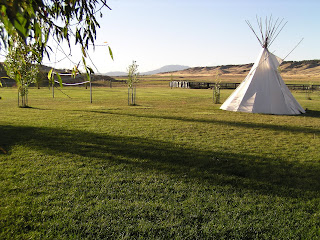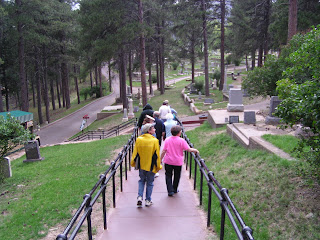We think Bonnie picked up a cold from a coughing waitress in Casper, Wyoming. By the time we reached Boise, she was starting to feel miserable. Ron started to feel the symptoms a day or two later. It was good timing since we were just a couple days from home. As we got further into the northwest, the weather became increasingly cloudy and much cooler. After wearing shorts nearly every day of the trip, Ron finally dug out a pair of jeans for the home stretch.
It's a respectable distance from Boise to Mill Creek and our comfort level is a maximum of about 250 miles a day. So, we plotted a course with two overnight stops. The first was Pioneer RV Park in beautiful Hermiston, Oregon. Most folks have heard of the famous Hermiston melons, but we had never been there. Frankly, we had low expectations of Hermiston, but we were impressed. It was a very nice clean well-kept town with a healthy city center and one of the cleanest RV parks we had encountered.
The drive down the Columbia Gorge was beautiful and we spent our final night on the road at the Mt. St. Helens RV Park in Castle Rock. We might have stayed another day or two for a trip closer to the mountain. Unfortunately, it was too cloudy so we got a good night’s sleep and cruised the final 135 miles home on Wednesday, Sept. 18. We unloaded the motor home, vacuumed, dusted and cleaned it up before taking it back to its resting place in the storage lot.
We had an excellent time on this extended 43-day vacation and hope you were able to follow along through this travelogue and share the experience. We saw many interesting things, stayed in a good variety of campgrounds and RV parks, ate some good food, saw lots of wildlife and met some interesting people along the way. Traveling at a slow pace in an RV is a good way to appreciate the vast expanse of our northwest corner of the country. It's larger than it seems and there’s no end of things to see and do. Every little town is different in its own way and has something unique to share with the passersby. We took a few books to read in our “spare time” but didn’t find much of that. We were too busy reading about the places we were visiting and the maps that would lead us to the next place. The 43 days gave us a good overview of several states, but there’s a lot more out there that we didn’t see or do. We still have a lot to look forward to in future trips.
Thanks for following along. We hope you enjoyed the ride.
--- Ron & Bonnie ---























































